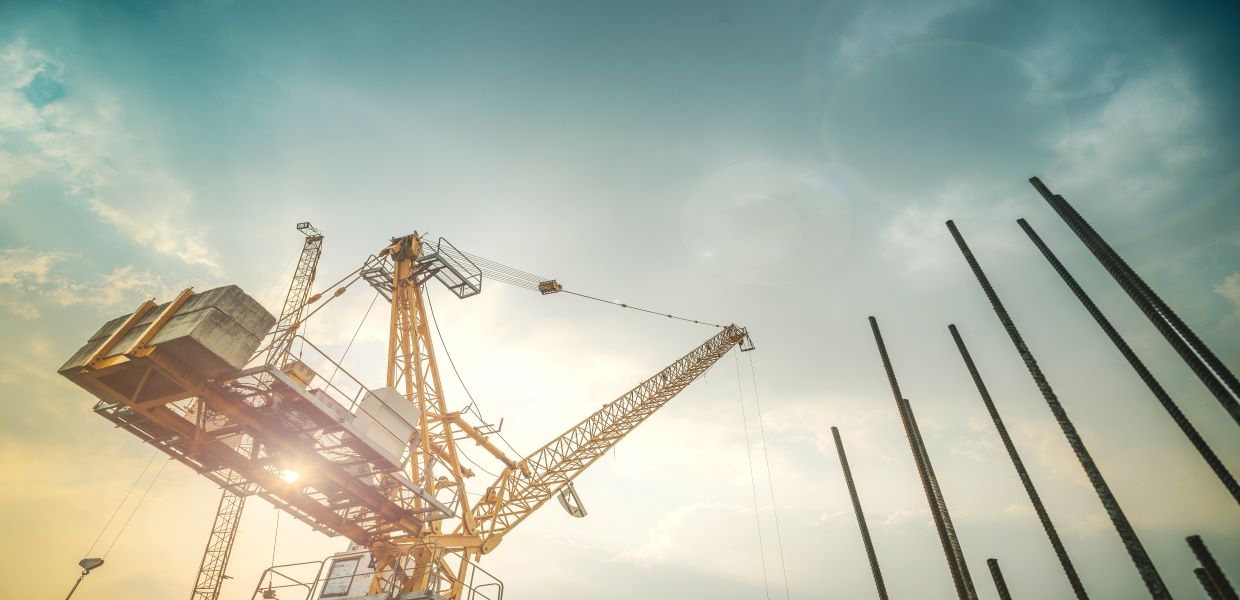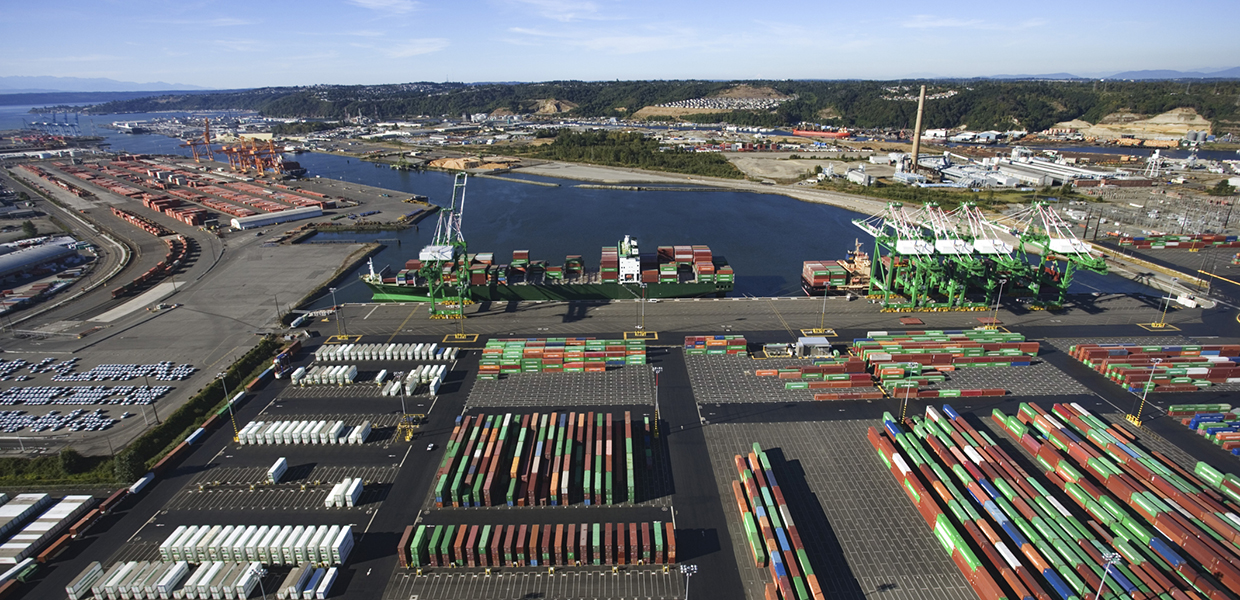The construction industry is a vital sector of the economy, but it also has a significant impact on the environment. Heavy construction vehicles and equipment are major contributors to greenhouse gas emissions. This is why reducing its carbon footprint is crucial for the construction industry and DLL can assist in this transition by helping businesses achieve their sustainability KPIs.
Playing a significant role in the global economy, the construction industry contributes to the development of infrastructure, housing, and other essential facilities. However, it is also one of the largest emitters of carbon dioxide and other greenhouse gases, which contribute to climate change. In 2019, construction was responsible for 38% of energy-related CO2 emissions.
Construction vehicles, in particular, are known for their heavy carbon footprint, emitting harmful pollutants into the atmosphere. In the journey to combat the impact of construction vehicles on the environment, reducing carbon emissions has become a critical issue for the industry. But where does the future of construction equipment lie?
Electrification of construction assets
The construction industry has traditionally been slow to adopt new technologies, and electrification seems to be no exception. Electrification of this equipment is still in its infancy, but it is a topic that has been receiving increasing attention as manufacturers begin to develop electric options.
However, while manufacturers explore electrification, there are significant challenges due to the nature of the equipment. These assets are typically stationed on-site for long periods, and it can be difficult to keep them charged. However, more and more manufacturers are beginning to develop electrified equipment, and it's only a matter of time before they become commonplace on construction sites. Smaller electric construction equipment, such as mini excavators, are already being produced and used, and the technology is continuing to evolve to meet the needs of larger equipment.
Two of the key benefits of electrified construction equipment are that they produce zero emissions while in use and reduce noise pollution. This is particularly important for construction sites located in urban areas, where air quality and noise pollution are major concerns, such as near hospitals and schools.
Electric construction equipment also boasts lower operating costs. Electric motors are more efficient than internal combustion engines, which means they require less fuel and maintenance. Over time, this translates into significant operational cost savings for construction companies.
However, there are also challenges to the adoption of electric construction equipment. The infrastructure needed to support the charging of electric equipment on-site can be significant, particularly for larger equipment. Additionally, the range of electric equipment can be a concern for equipment that needs to travel significant distances on-site. The cost of electrified equipment is also currently significantly higher than diesel-powered equipment, which may discourage some companies from making the switch.
Despite these challenges, the electrification of construction equipment is a trend that is here to stay. As battery technology improves and becomes more affordable, electric equipment will become increasingly common on construction sites. Additionally, governments around the world are beginning to implement regulations that will push the industry towards electrification. For example, several European cities have introduced legislation that limits noise pollution and emissions in urban construction sites, and similar legislation is expected to be introduced in other parts of the world in the coming years. This legislation will make it difficult for construction firms that have not invested in electric assets to bid on projects in urban areas.
The future of hydrogen in construction
Hydrogen fuel cell technology has been gaining traction as another viable alternative to traditional combustion engines. Its ability to produce electricity by combining hydrogen and oxygen to generate water, without producing harmful emissions, makes it an attractive choice for a variety of applications. The adoption of hydrogen fuel cell technology can play a critical role in reducing emissions, while providing the power and performance needed for construction equipment to operate efficiently.
Hydrogen fuel cell-powered construction equipment has several advantages over traditional fossil fuel-powered equipment. Producing zero harmful emissions, the equipment is also much quieter and can be refueled in minutes rather than the hours it takes for electric vehicles. They also have fewer moving parts, requiring less maintenance and offering a longer lifespan.
Several major manufacturers of construction equipment are already exploring the use of hydrogen fuel cell technology while countries like Japan and China are investing heavily in hydrogen infrastructure, which will drive the adoption of this technology.
However, like electric vehicles, hydrogen fuel cell options face a number of challenges. For now, limited infrastructure, the high cost of fuel cells and the short lifespan of the fuel cell stack remain obstacles while the energy required and methods used to produce hydrogen can also limit its environmental benefits.
Despite these challenges, continued research and development could help to overcome these obstacles and make hydrogen a viable alternative for construction equipment.
Driving sustainability through digitization
In recent years, there has been a growing trend towards digitization in the construction industry and the increasing use of technology in construction equipment is helping to improve sustainability.
Smart construction vehicles equipped with digital systems can optimize their routes and workflows, thus reducing fuel consumption and carbon emissions. These vehicles can also collect data about their performance and send real-time alerts to maintenance crews if any issues are detected. Predictive maintenance can prevent costly repairs and reduce vehicle downtime, making construction sites more efficient and sustainable.
Digitization is also enabling construction vehicles to operate in a more sustainable manner by reducing the amount of waste generated. Vehicles can collect data on the materials they use and send alerts when they are running low or when the equipment is being used inefficiently. This data can be used to optimize the use of resources and minimize waste, thus reducing the environmental impact of construction vehicles.
The robotics revolution
While there has been significant interest in robotics in the intralogistics and even materials handling industries, construction has, once again, been slow to adopt this flourishing new technology. However, robotics may yet have a bright future in the construction industry thanks to its ability to automate repetitive tasks, increase precision and work for long hours.
By reducing waste and carbon emissions, increasing efficiency and safety, enhancing maintenance and performance, and improving resource management, robots could bring new possibilities to the industry. As technology continues to advance, we can expect to see more robotic construction vehicles being deployed, leading to a more sustainable and efficient construction industry.
The second life of construction equipment
Lifecycle asset management, refurbishment, and remanufacturing are essential practices in the construction industry that can improve sustainability. By carefully monitoring and maintaining equipment throughout its lifecycle, companies can extend the useful life of equipment, reduce waste and emissions, and minimize the need for new equipment.
Refurbishment and remanufacturing also help to extend the life of equipment, reduce waste, and save energy that would have been used in the production of new equipment.
Let DLL help finance your future equipment
Reducing construction vehicle carbon emissions is essential to creating a sustainable construction industry. Whether you’re looking at investing in electrification, hydrogen, digitization, or robotics, DLL’s experts are here to help you make your construction vehicles more efficient and reduce your carbon footprint.
While most of these technologies are still in their infancy, DLL is constantly working to find financing solutions, including Residual Fair Market Value Leasing and Used Equipment Finance, that make sustainable options more enticing. Connect with our construction asset finance experts to see how DLL can provide a tailored finance solution that caters to your needs.


